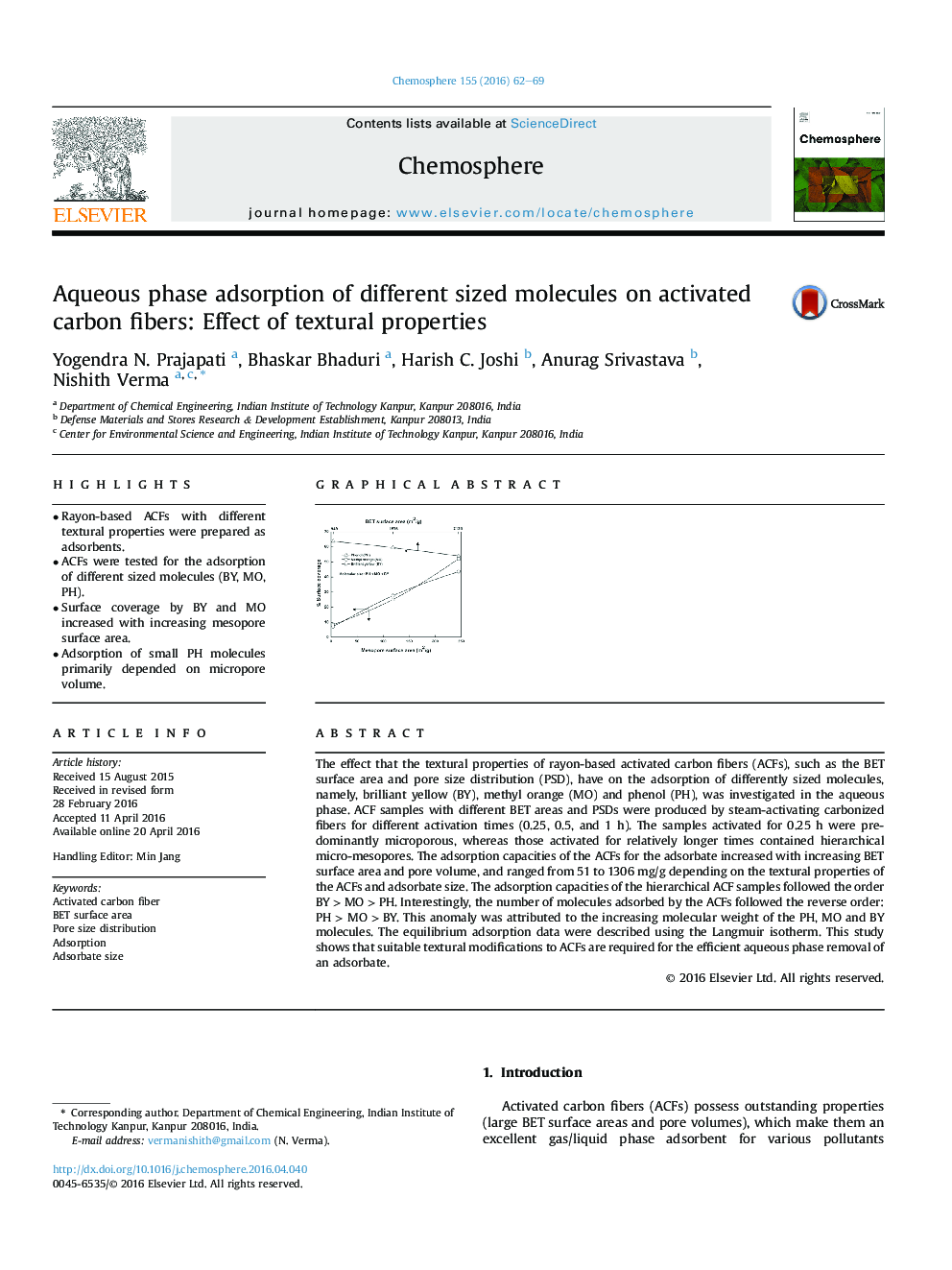| کد مقاله | کد نشریه | سال انتشار | مقاله انگلیسی | نسخه تمام متن |
|---|---|---|---|---|
| 4407539 | 1618816 | 2016 | 8 صفحه PDF | دانلود رایگان |
• Rayon-based ACFs with different textural properties were prepared as adsorbents.
• ACFs were tested for the adsorption of different sized molecules (BY, MO, PH).
• Surface coverage by BY and MO increased with increasing mesopore surface area.
• Adsorption of small PH molecules primarily depended on micropore volume.
The effect that the textural properties of rayon-based activated carbon fibers (ACFs), such as the BET surface area and pore size distribution (PSD), have on the adsorption of differently sized molecules, namely, brilliant yellow (BY), methyl orange (MO) and phenol (PH), was investigated in the aqueous phase. ACF samples with different BET areas and PSDs were produced by steam-activating carbonized fibers for different activation times (0.25, 0.5, and 1 h). The samples activated for 0.25 h were predominantly microporous, whereas those activated for relatively longer times contained hierarchical micro-mesopores. The adsorption capacities of the ACFs for the adsorbate increased with increasing BET surface area and pore volume, and ranged from 51 to 1306 mg/g depending on the textural properties of the ACFs and adsorbate size. The adsorption capacities of the hierarchical ACF samples followed the order BY > MO > PH. Interestingly, the number of molecules adsorbed by the ACFs followed the reverse order: PH > MO > BY. This anomaly was attributed to the increasing molecular weight of the PH, MO and BY molecules. The equilibrium adsorption data were described using the Langmuir isotherm. This study shows that suitable textural modifications to ACFs are required for the efficient aqueous phase removal of an adsorbate.
Figure optionsDownload as PowerPoint slide
Journal: Chemosphere - Volume 155, July 2016, Pages 62–69
